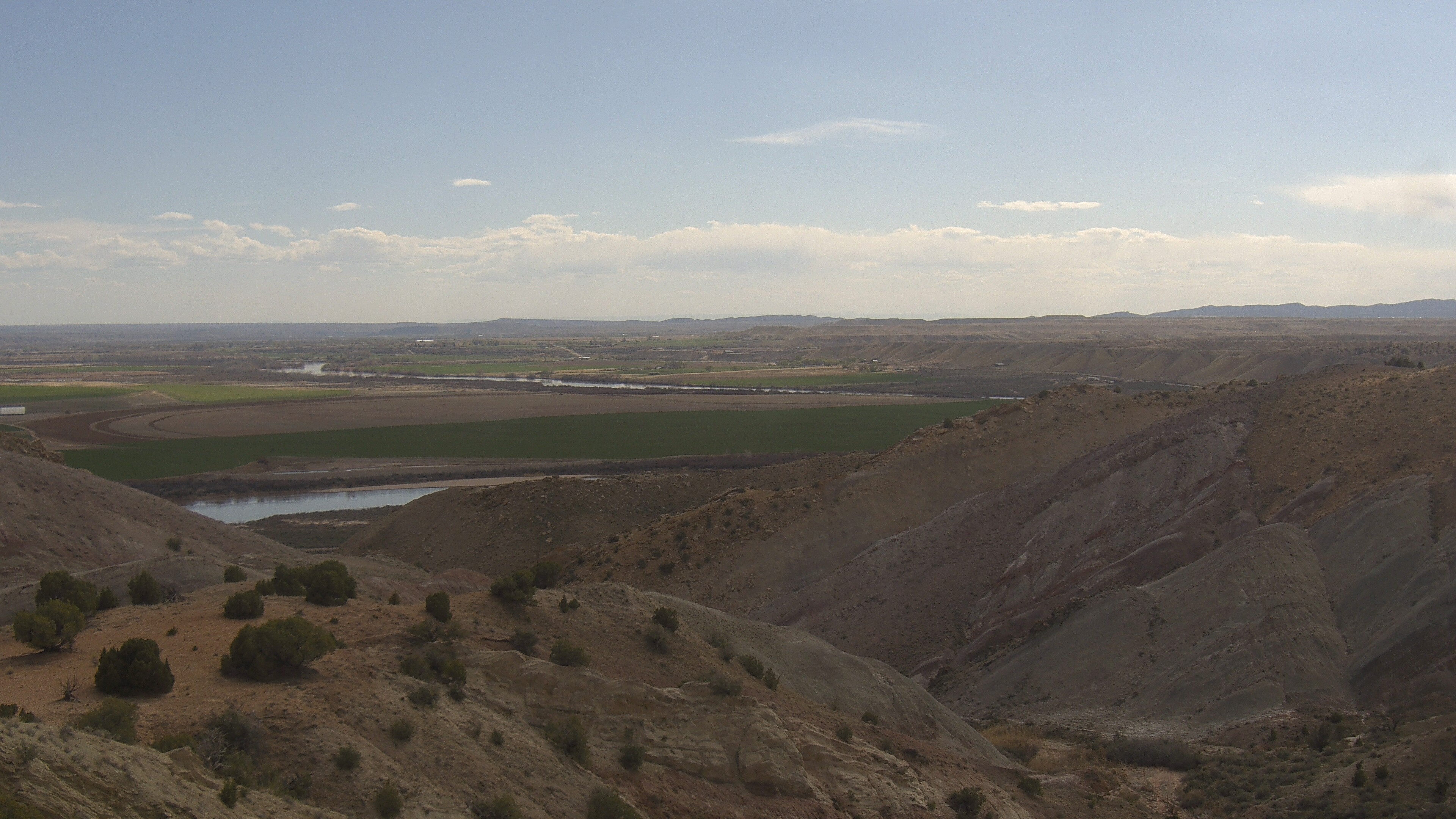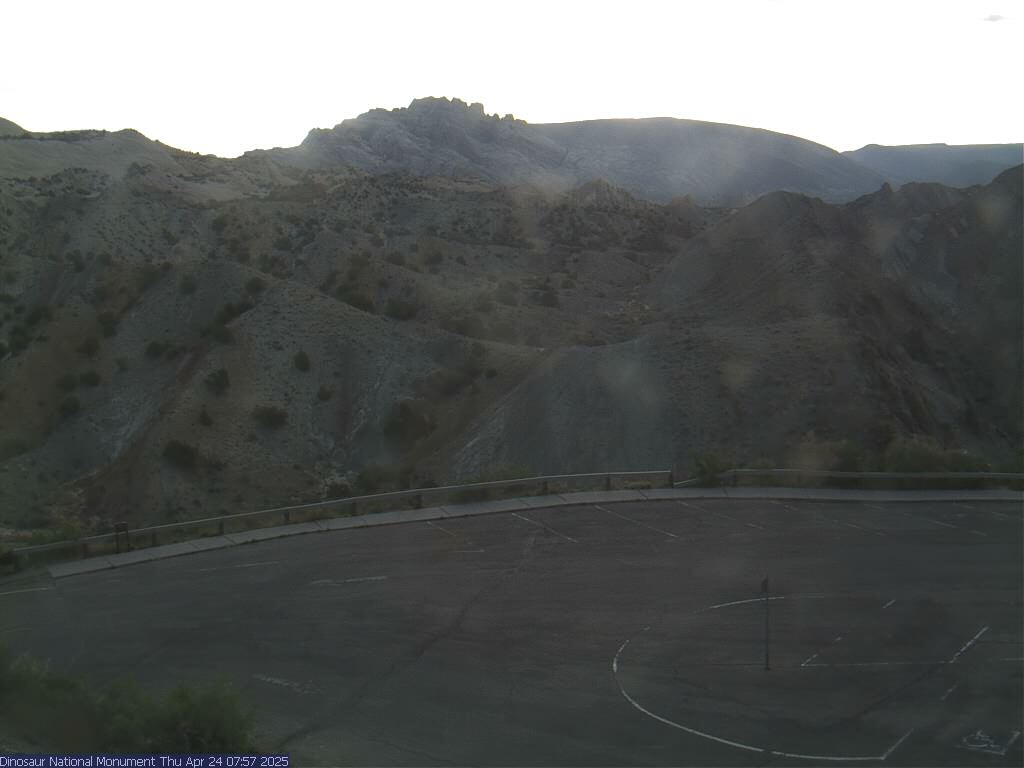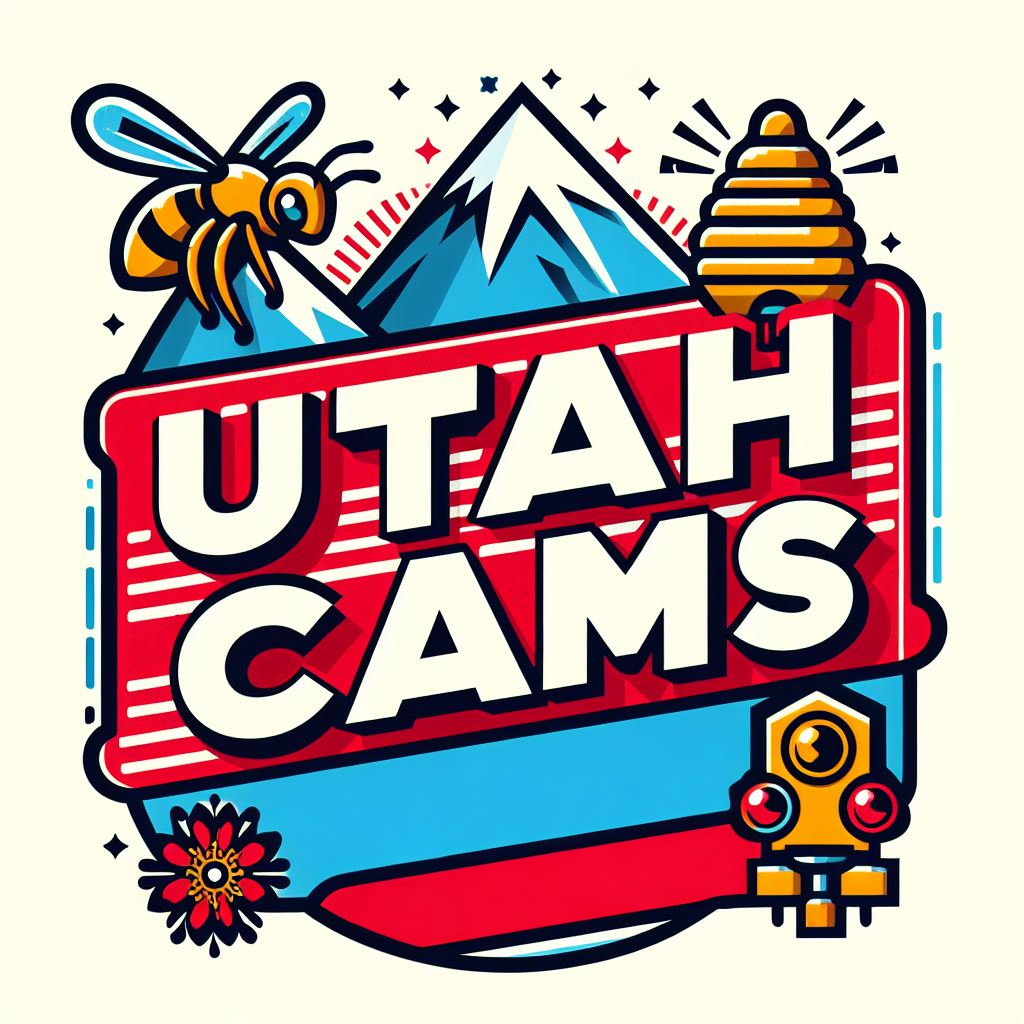Dinosaur National Monument, UT Weather Cams
Current Air Quality Cam

Split Mountain Cam

Dinosaur National Monument: Unveiling the Prehistoric Past of Utah’s Fossil Wonder
Dinosaur National Monument Webcams. Nestled in the rugged canyons of northeastern Utah and northwestern Colorado, Dinosaur National Monument stands as a testament to the ancient past and the wonders of natural history. From its discovery as a treasure trove of dinosaur fossils to its designation as a national monument, Dinosaur’s story is one of scientific discovery, preservation, and the enduring fascination with the giants that once roamed the Earth.
Geological Wonders: The Unfolding of Time
The history of Dinosaur National Monument begins over 150 million years ago during the late Jurassic period when the region was covered by a vast inland sea. Over millions of years, layers of sediment accumulated on the sea floor, gradually burying the remains of plants and animals that lived in the ancient ecosystem.
As the Earth’s crust shifted and the sea receded, the layers of sediment were exposed to the erosive forces of wind and water, gradually revealing the fossilized remains of dinosaurs and other prehistoric creatures. Today, these fossils provide scientists with a glimpse into the distant past and the incredible diversity of life that once existed in the region.
Discovery and Exploration: Unearthing the Past
The first recorded discovery of dinosaur fossils in the area now known as Dinosaur National Monument occurred in 1909 when paleontologist Earl Douglass stumbled upon a large deposit of dinosaur bones while searching for fossils for the Carnegie Museum of Natural History. Over the next several years, Douglass and his team excavated thousands of dinosaur bones from the site, including the skeletons of Allosaurus, Stegosaurus, and Apatosaurus, among others.
News of Douglass’s discovery spread quickly, attracting the attention of scientists and fossil enthusiasts from around the world. In 1915, President Woodrow Wilson designated the area as Dinosaur National Monument in recognition of its scientific and cultural significance, paving the way for the establishment of the national monument.
Conservation and Preservation: Protecting the Fossil Heritage
In the years following its designation as a national monument, Dinosaur became a focal point for scientific research and exploration, as paleontologists from across the country flocked to the region to study its rich fossil deposits. In 1938, the fossil quarry at the heart of the monument was enclosed in a protective building, allowing visitors to view the exposed dinosaur bones in their natural state.
Over the years, efforts were made to preserve and protect the fossil heritage of Dinosaur National Monument, including the establishment of visitor centers, interpretive trails, and educational programs aimed at raising awareness about the importance of fossil conservation and stewardship.
The Dinosaur Quarry: A Window into the Past
One of the highlights of a visit to Dinosaur National Monument is the Dinosaur Quarry, where visitors can view an impressive array of dinosaur fossils in their natural setting. The quarry, which contains over 1,500 dinosaur bones, offers a unique opportunity to see fossils that are still embedded in the rock, providing a glimpse into the process of fossilization and the ancient ecosystems of the Jurassic period.
Visitors to the quarry can also learn about the history of paleontology and the methods used by scientists to excavate and study dinosaur fossils. Interpretive exhibits, ranger-led programs, and guided tours offer insights into the lives of the dinosaurs that once roamed the region and the ongoing efforts to unravel the mysteries of the prehistoric past.
Outdoor Adventures: Exploring the Monument
In addition to its rich fossil heritage, Dinosaur National Monument offers a variety of outdoor recreational opportunities for visitors to enjoy. The monument’s rugged canyons, towering cliffs, and scenic rivers provide a stunning backdrop for hiking, camping, rock climbing, and whitewater rafting.
One of the most popular activities in the monument is rafting on the Green and Yampa rivers, which wind their way through spectacular canyons and rapids, offering a thrilling adventure for outdoor enthusiasts of all ages. Hiking trails such as the Fossil Discovery Trail and the Harpers Corner Trail provide opportunities for visitors to explore the monument’s diverse ecosystems and observe its abundant wildlife.
Challenges and Conservation Efforts: Protecting the Monument
Despite its protected status, Dinosaur National Monument faces a number of conservation challenges, including threats from development, climate change, and invasive species. Efforts are underway to address these challenges and ensure the long-term health and sustainability of the monument’s ecosystem.
One of the most pressing concerns is the impact of climate change on the monument’s natural resources and cultural heritage. Rising temperatures, changing precipitation patterns, and increased frequency of wildfires are already affecting the monument’s plant and animal species, while increased visitation and development are putting additional pressure on its fragile ecosystems.
Looking to the Future: Preserving the Legacy
As Dinosaur National Monument looks to the future, it remains committed to its mission of preserving and protecting the fossil heritage, natural beauty, and cultural significance of the region for future generations to enjoy. Through education, conservation, and sustainable management practices, the monument seeks to ensure that the wonders of its prehistoric past will continue to inspire awe and wonder in all who visit this timeless landscape.
For more information, visit the official Dinosaur National Monument website.
